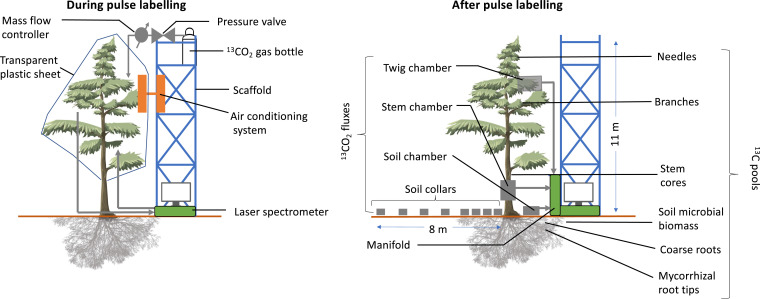Fig. 1.
Setup of the 13C pulse labeling (Left) and the tracing of the fate of 13C in respiratory fluxes and plant and soil microbial pools (Right). A transparent plastic sheet was erected from scaffolds, enclosing the whole-tree crown to form a labeling chamber. 13CO2 was added to the chamber from gas bottles via a mass flow controller. The 13CO2 concentration was monitored with LGR CCIA 46d isotope laser spectrometers. The air temperature was adjusted to maintain ambient temperature with an air-conditioning system involving a closed coolant system so that no air exchange between inside and outside the chamber occurred. One branch, stem, and soil chamber per tree were connected via a manifold with automatically controlled solenoid valves to the isotope laser spectrometer. Within a radius of 8 m (along three transects per tree), soil collars were installed to determine the spatiotemporal pattern of soil-respired 13CO2 that was measured in the gas samples. Samples of different plant organs and the soil microbial biomass were taken to determine the 13C enrichment at different time points after labeling.

